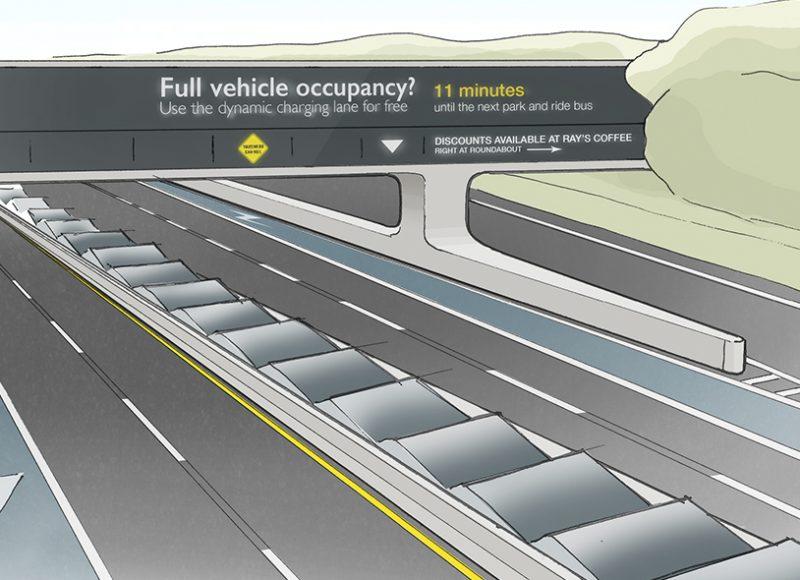Alastair MacGregor, CEO of Innovia Technology, is excited by the challenge, which will see the company evaluate the technologies identified by the project, for example: algae biodiesel gas stations; smart solar-powered roads; moon-cycle adjusting lights; wildlife bridges; driverless cars; electric-car charging lanes and cultural greenways.
MacGregor says: “Worldwide the highway infrastructure is continuously maintained, rebuilt and expanded at considerable economic and environmental cost. The Mission Zero Corridor Project is proposing an alternative future where highways have a positive impact on our communities. It’s very exciting to be involved in making this vision a reality.”
The Mission Zero Corridor Project aims to be a fitting legacy for the late Ray C Anderson, “the greenest CEO” and founder of Interface Inc., the largest global manufacturer of modular carpet. Back in 1994 Ray read the book ‘The Ecology of Commerce’ and it transformed his outlook on business and the environment. With his company’s global reach and manufacturing footprint, he realised he was in a position to do something very real and important towards building a more sustainable world.
Ray developed the Mission Zero framework to eliminate Interface’s environmental impact while maintaining productivity and still turning a profit. The aim was a promise to “eliminate any negative impacts the company may have on the environment by 2020” and the framework created a blueprint for business sustainability.
Ray was internationally renowned as a powerful advocate for environmental stewardship. As a memorial, the Ray C Anderson Foundation is using a 16-mile stretch of the Interstate 85 in Troup County, West Georgia, as a living experiment to demonstrate that it is possible to build a “regenerative, restorative and sustainable highway”.
To get the project started the Foundation and Interface funded a vision study through The Georgia Conservancy’s Blueprints for Successful Communities program. Using Interface’s Mission Zero framework as a roadmap, graduate students in the School of Architecture at the Georgia Institute of Technology, with studio instruction from a team of architects from Perkins+Will in Atlanta, explored how a highway could be a tool of change.
The outcome was an inspirational report that identifies a broad range of potential technologies and opportunities.
Innovia’s role is to provide a creative exploration of new opportunities, evaluate the technologies for viability and scalability, and to propose a strategy to bring the vision to life by attracting the engagement and support of key stakeholders.
The company has a strong track record for breakthrough innovation and Innovia came to the attention of the Ray C Anderson Foundation through its pioneering work on aircraft cabin design, renewable energy, sustainable manufacturing and biomaterials. The kick-off meeting is planned for late summer.
More information about Mission Zero Corridor Project is available here: http://www.raycandersonfoundation.org/assets/pdfs/MZC_executive_summary.pdf
__________________________________



